Traction Battery Repairs
The traction battery (the 200 volt battery that powers the motors of the prius) is often a source of many problems with the second generation Prius. Our Prius was left up for a couple of months after January 2021, which allowed water to accumulate inside the car. When we attempted to start the car, the battery seemed to be dead. We got the dreaded P0A80 code with a red triangle of death 🔺
Diagnosis 🩺
Upon searching the P0A80 code online, the first results returned “Replace Hybrid Battery Pack” warnings, which is pretty worrying! So out came the battery pack, which is located just behind the back seats.
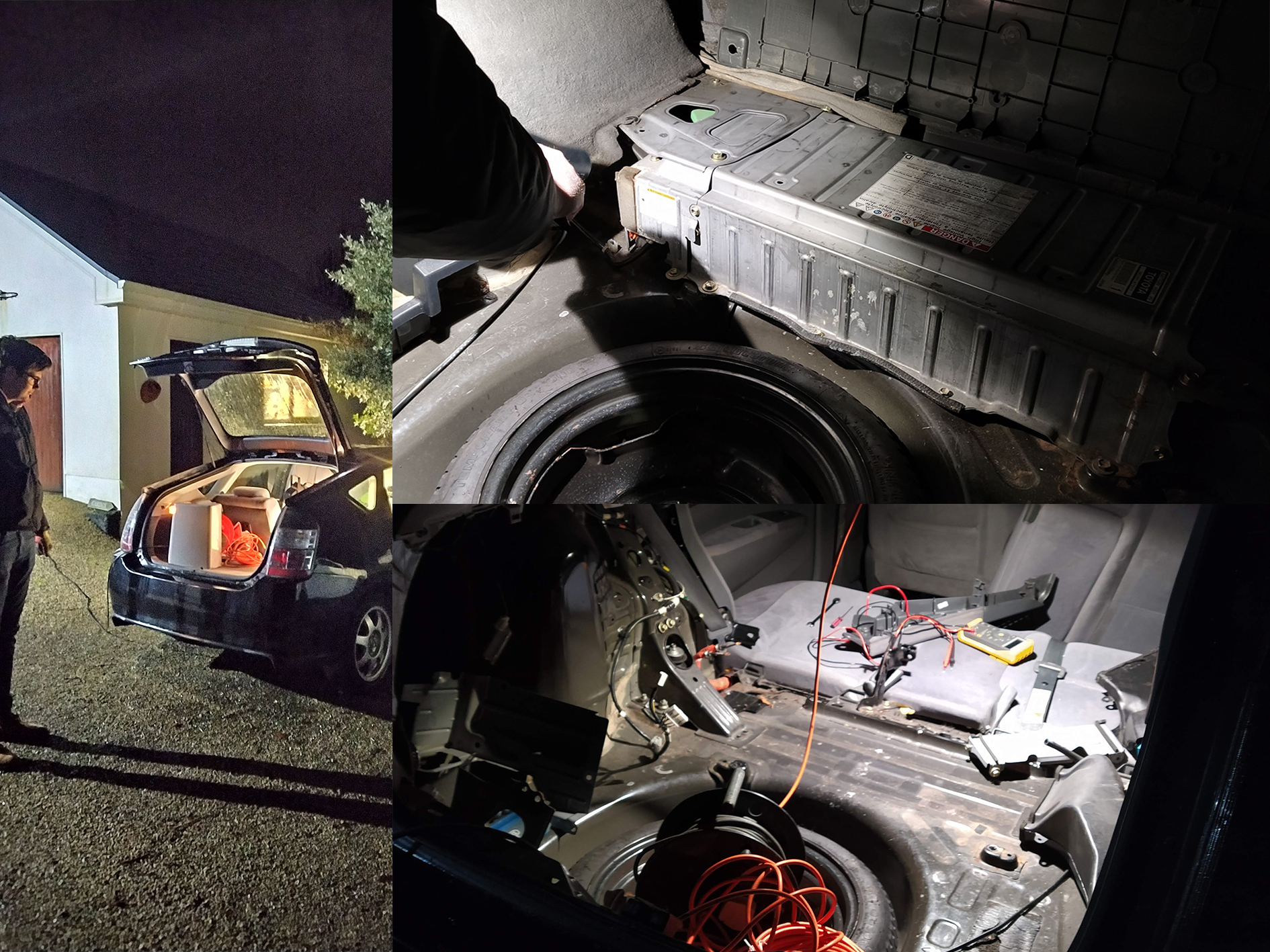
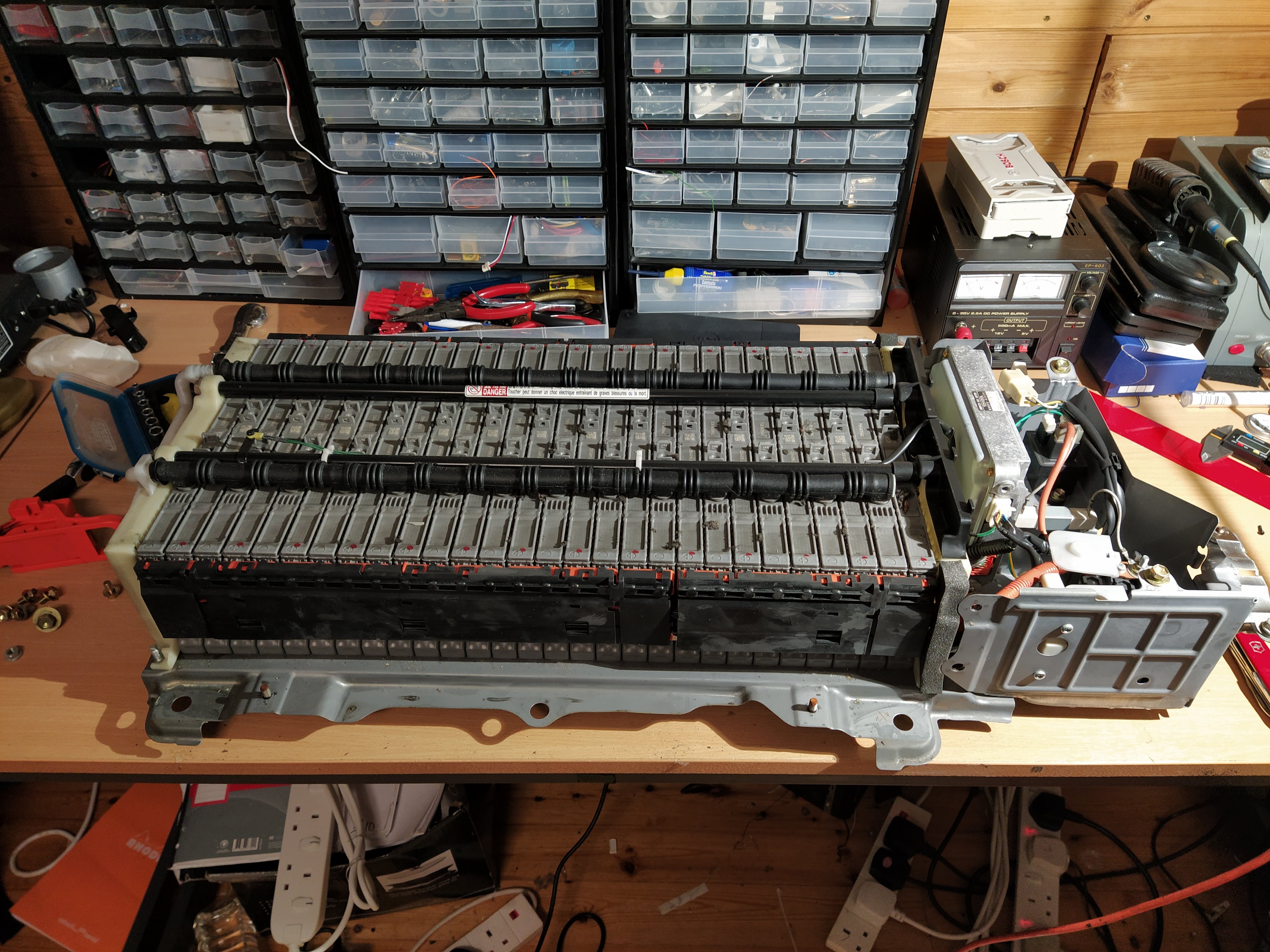
After removing the traction battery, the first thing we checked were the cell voltages. Some of the cells were close to zero volts and others were even negative 😰 (The nominal voltage of each module should be 7.2V)
The questions were now, what is the extent of the damage, what caused this and how can it be fixed. After doing some more searching of the PriusChat forums, it was recommended that the high voltage connector into the battery ECU is checked because that connector can short out if moisture gets into the car. The ECU was designed as if it was going to be in indoor conditions, which it should be, however if it is left outside the battery can short through this connector even if the service plug grip is out and the car is fully powered down.
The purpose of the high voltage connector is to allow the battery monitoring system to read the module voltages. This means that there are potentially voltage gradients of 200 volts across the connector. The original designers made an effort to arrange the pins to reduce the voltage gradient, but it still ended up shorting the battery in outside moisture conditions.
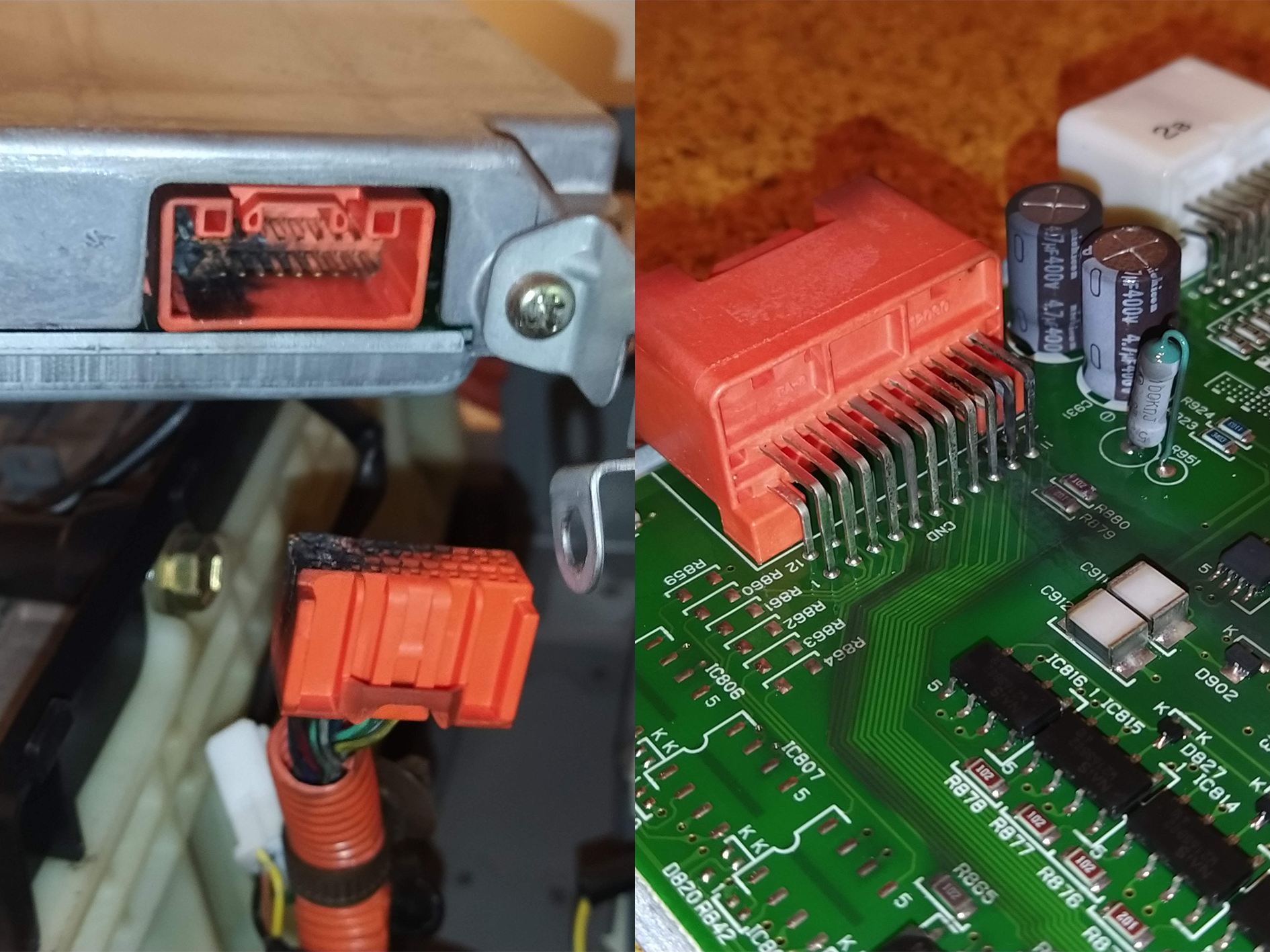
And there you go. She’s well burnt. This means that the cells and the board could potentially be damaged. We know that the cells are already damaged for sure. After a quick test of the board, it amazingly seemed fine. Obviously the connector would need to be replaced, but the only damage was some heating of the traces. Since the short occured through the connector, none of the current ran throught the board itself.
Repair 🔨
I bought replacements for the severely damaged cells and a new connector for the battery ECU. The cells came from a lad in Cork that dismantles hybrid batteries and resells the individual components. A replacement connector was the most difficult thing to find! The connector should be 22 pin, but this is not a very common size of connector to come by. So I got 20 pin male and female connectors since the last two pins are not used.
The female connector is a MULTILOCK 040 II Female Connector Housing, 20 Way, 2 Row Right Angle. The male connector is a MULTILOCK 040 II Male Connector Housing, 2.5mm Pitch, 20 Way, 2 Row. The pins are MULTILOCK 040 Female Crimp Terminal Contact 20AWG.
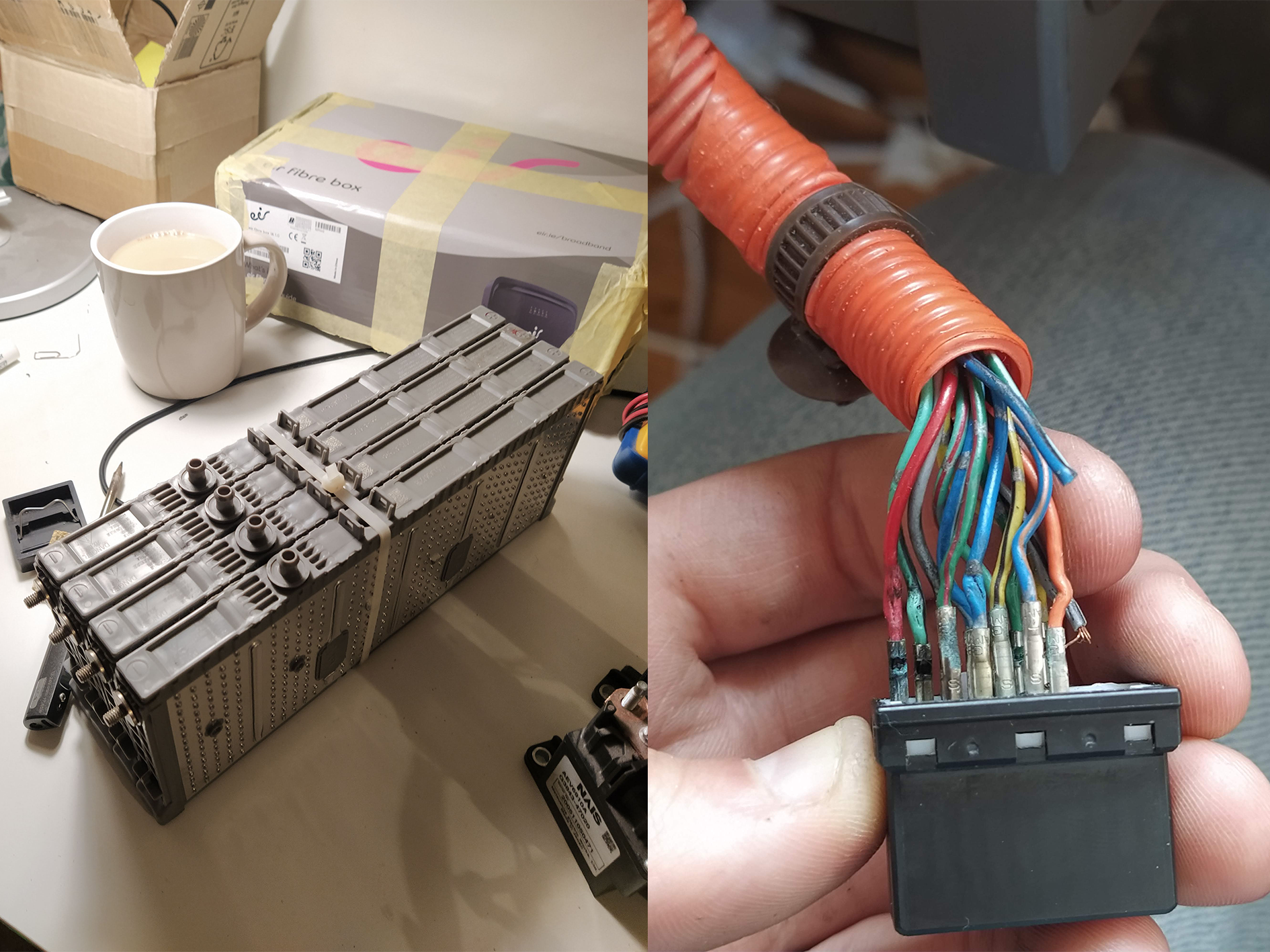
We returned the battery to the car and tried starting it again. There was still a red triangle of death, but now there were no fault codes on the OBD.
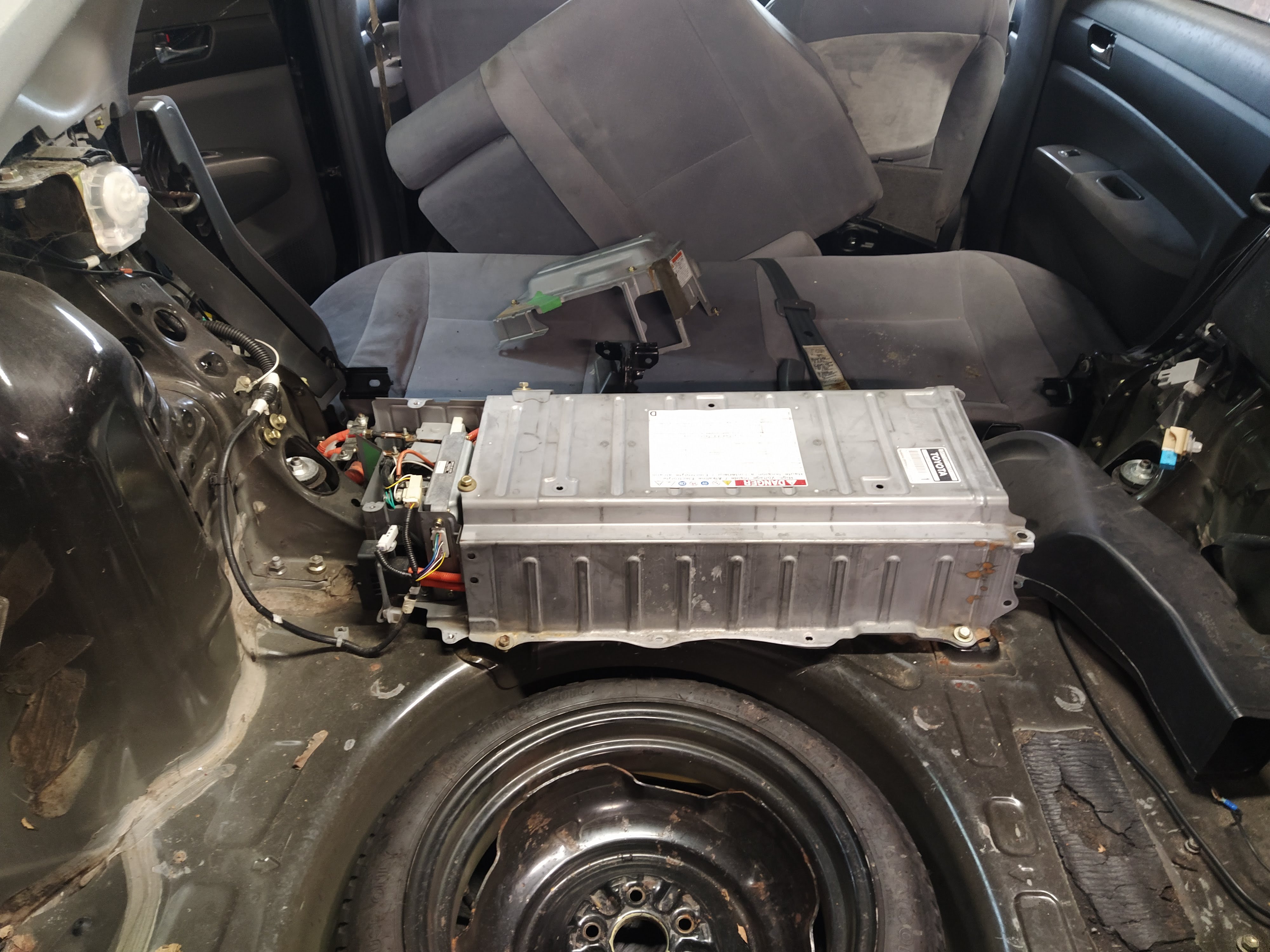
The new cells were put in on the 11th of January 2021. No time was spared with replacing those. However, the new connector was installed on the 6th June because we didn’t get to work on the Prius over the college semester. After the battery was reinstalled and the problem still persisted, it was difficult to find the time to diagnose the problem since we were only home for a couple of days at a time. Come Christmas 2021 though and we had a full week to go at it.
We came up with a list of possible issues and ways to solve them as follows:
- Get a Mini VCI cable and a copy of Techstream to read more in depth codes
- We did this, but it took too long to come
- In the future, we should be able to troubleshoot problems like this more easily with more helpful codes
- Balance the cells
- The Prius does not balance the cells, it only monitors them. Therefore if the lowest and highest voltage cells have more than a volt of a difference between them, the P0A80 code might be active again.
- This could have been the case, since the replacement cells were not charged to match the rest of the battery
- Battery blower fan malfunction
- The car would technically still run if this was a problem, but the fan was filthy anyways
- High voltage leak
- A high voltage leak can occur when the cells of the prius leak electrolyte and form a conductive path to the chassis of the car
- The error for this would be a P0AA6
- We followed the diagnostic steps for P0A66 (page HV-426 to HV-427 of P112 Hybrid vehicle control manual: http://static.hybrids.ru/files/OfficialToyotaInfo/RepairInformation/RepairManual/HV%20-%20P112%20Hybrid%20Vehicle%20Control.pdf) which eventually led us to the problem
The problem was very simple in the end. While the car wouldn’t start up, I (Kev) attempted to get a simple battery charger to work with a prius inverter. While doing this, I think I might have blown the precharge resistor. Since the precharge resistor was blown, no voltage was detected at the inverter side and this was detected as a high voltage leak, which prevented the car from starting.

We replaced the precharge resistor with another power 20 ohm resistor from a microwave and as soon as the battery was reinstalled, she started up. Thus she awoke from her slumber of almost a year 💖
The first point of duty is to replace the battery ECU with a custom one. We might as well replace the NiMH battery with a Li-ion one too while we’re at it. A battery charger has already been made, so a post should be coming out on that soon as well if other priorities don’t take over.
